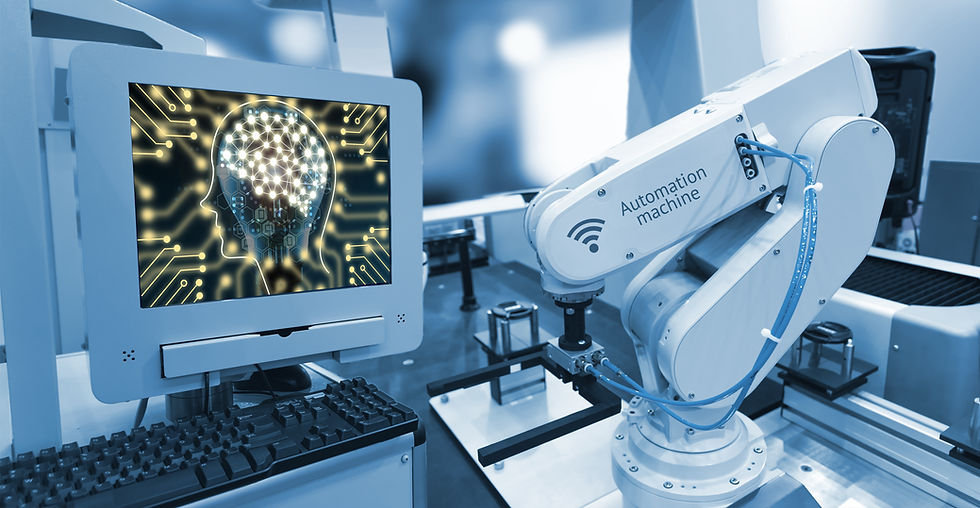Transform Ideas into Reality with IoT Product Design Services
- Srihari Maddula
- Jul 15
- 3 min read
Updated: Oct 13
The Internet of Things (IoT) is transforming how we interact with technology and the environment. From smart homes and wearables to industrial IoT solutions and smart city technology, connected devices are making everyday life more efficient, intelligent, and sustainable. However, turning innovative concepts into functional, market-ready products requires specialized IoT product design services and expertise in embedded systems development.
Connected Device Design Expertise
Connected devices are becoming ubiquitous, from smart lighting systems and smart poles with IoT integration to wearable health monitors and industrial automation platforms. Creating successful IoT products requires a holistic design approach that integrates hardware, software, and user experience.
For instance, smart thermostats combine sleek design with intelligent features like energy-saving automation, remote control, and user-friendly interfaces. This integration exemplifies how embedded AI and IoT product engineering deliver functionality that is both practical and engaging.

The Importance of User-Centric Design
A cornerstone of successful IoT product design is user-centric design. This approach ensures that devices not only function well but also enhance the user’s lifestyle.
Conduct market research to understand target demographics.
Collect feedback through surveys or usability testing.
Customize features for user needs — for example, health-monitoring wearables may require simplicity for elderly users and advanced analytics for tech-savvy individuals.
User engagement and usability are key to adoption and satisfaction, which ultimately define a product’s success in the market.

Prototyping and Iteration in IoT Products
Prototyping is a crucial phase in IoT product engineering. It allows teams to test functionality, uncover design issues, and iterate rapidly before mass production.
Example: A smart irrigation system prototype may reveal that users struggle with its mobile app interface. Iterations based on this feedback improve usability and prevent costly post-launch changes.
Tools like CAD (Computer-Aided Design) streamline visualization and design modification.
Rapid prototyping accelerates time-to-market and ensures user feedback informs final product design.

Embedded Systems and Software Integration
The backbone of every IoT device is its embedded system, which combines hardware and software to enable connectivity, intelligence, and functionality.
Select microcontrollers and sensors compatible with your device’s software.
Example: Smart bulbs require reliable Wi-Fi or Bluetooth modules for seamless control.
Implement AI-powered features for predictive maintenance or energy optimization in industrial and smart infrastructure systems.
Prioritize security with robust encryption and secure coding practices to protect sensitive data.
Effective embedded AI integration and hardware-software synergy ensure smooth device operation, higher reliability, and enhanced user experience.
Testing, Validation, and Compliance
Thorough testing ensures that IoT devices meet functionality, performance, and safety standards.
Example: Healthcare devices must comply with medical regulations.
Test across hardware variants, network conditions, and software versions.
CI pipelines and hardware-in-loop testing reduce post-launch issues.
Investing in rigorous testing improves reliability, minimizes recalls, and enhances user trust — key factors in successful IoT product engineering.
Bringing Your IoT Product to Market
Launching a connected device requires more than functional hardware — it demands strategic marketing and outreach.
Highlight unique features like energy efficiency or predictive analytics.
Collaborate with industry influencers to reach a targeted audience.
Emphasize sustainability to appeal to eco-conscious consumers, especially in smart city solutions and smart infrastructure projects.
A well-planned launch strategy ensures your product reaches its audience effectively and gains traction in competitive markets.
Sustainable IoT: Designing for a Better Future
Sustainability is becoming central to IoT product design services. Smart devices can reduce energy consumption, optimize resources, and minimize environmental impact.
Agricultural sensors optimize water usage.
Smart energy systems in homes and offices reduce electricity waste.
Integrating AI and IoT analytics ensures resource efficiency while delivering actionable insights.
Products designed with sustainability in mind not only benefit the environment but also appeal to a growing segment of eco-conscious consumers.
Conclusion
Transforming ideas into market-ready IoT products requires expertise in embedded systems development, AI-enabled IoT, and smart infrastructure solutions. By focusing on user-centric design, prototyping, software-hardware integration, and rigorous testing, businesses can create connected devices that are functional, secure, and scalable.
Partnering with professional IoT product design services accelerates innovation, ensures compliance, and brings cutting-edge products to market that improve lives while promoting sustainability. The IoT ecosystem is evolving rapidly — now is the time to harness its potential and deliver impactful solutions that shape the future.










Comments